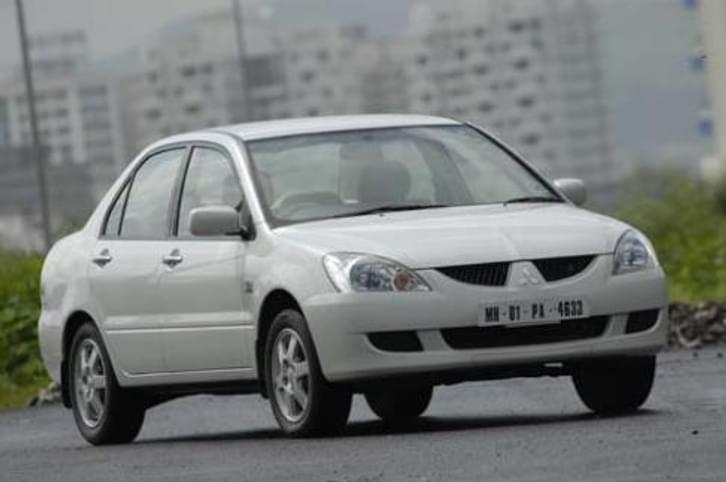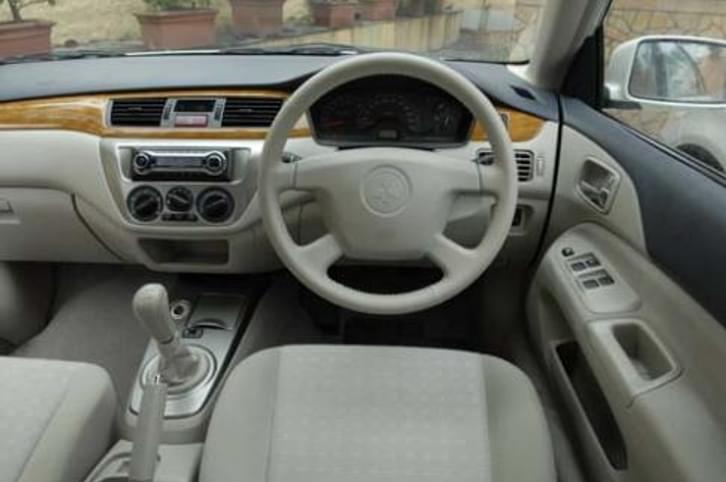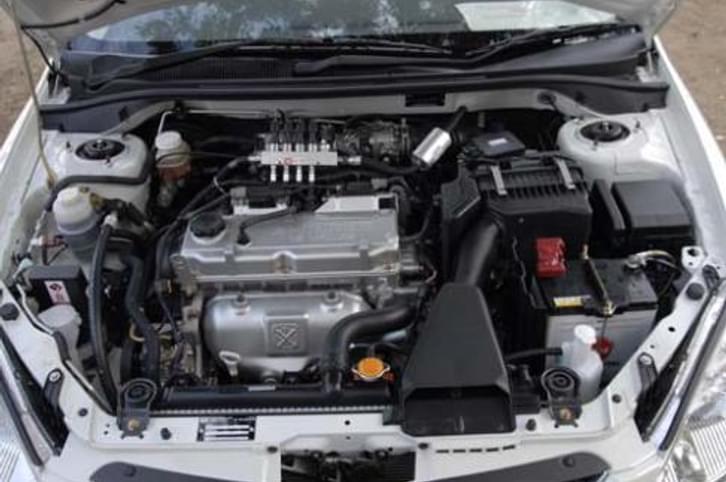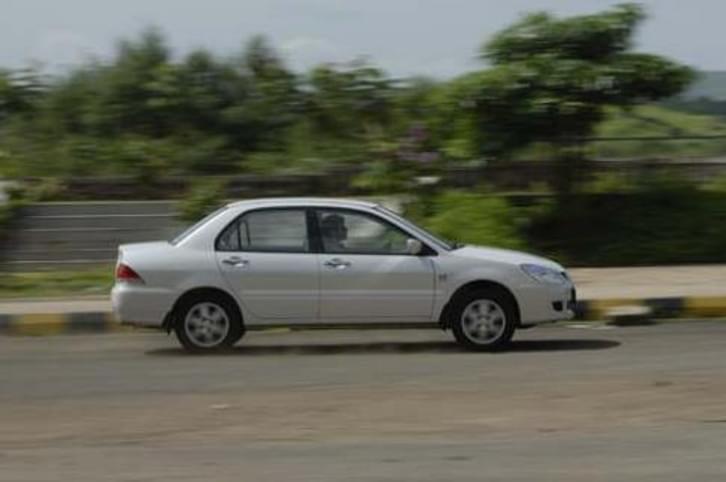Mitsubishi Cedia LPG
The Cedia LPG is well built, handles decently and is a spritely performer as well
Updated on Jul 16, 2012 04:12:39 PM
4,753 Views
Follow us on



Is the LPG option, the first in the premium segment, the answer? Lowering running costs is a sureshot way to enhance a car’s appeal and the LPG route is becoming increasingly popular. It’s not difficult to understand why when you compare the cost per litre of LPG and petrol. The former is around 40 percent cheaper.
The LPG kit in the Cedia is made by BRC of Italy, the only Indian-made components are the storage tank and the sheet metal brackets to hold the tank in place, the rest is all imported. The key component is the sequential injection system for delivering fuel to the Cedia’s 1999cc, four-cylinder engine.
LPG is stored under pressure in the big 48-litre tank in the Cedia boot. From here, it goes via a regulator through the pressure reducer and to the injectors, which are controlled by a 16-bit processor. The LPG Cedia has an additional ECU for the LPG mode that essentially works as a piggyback ECU. The petrol ECU sends information from the oxygen sensor, the manifold-absolute pressure sensor and the engine rpm sensor to the LPG ECU, so there is no need for an extra set of sensors.
The kit is safe too — the LPG tank is double-walled and the system uses corrugated wiring harnesses and copper tubes to prevent gas leakage. In the event of an accident, which is a very likely scenario on Indian roads, a solenoid valve will cut-off fuel supply. And to give you that feel-safe factor, Mitsubishi also supplies a fire extinguisher which is strapped under the front passenger seat.
Except for the petrol/LPG switch, the interiors are identical to a regular Cedia. The overall interior quality is good, better than the Corolla but not a match for the Civic. The dash design feels a little dated and there are some nasty bits like the cheap- looking power window switches, the side air vents and their flimsy air-flow controls, which don’t belong to a premium mid-size saloon. The light-coloured interiors are sure to get soiled soon though.
The generous front seats are height-adjustable, the steering adjusts for rake, and the high-set gearlever falls perfectly to hand. The front passengers get quite a few cubbyholes to keep stuff. The moderately-sized bin between the front seats and the door pockets is big enough, but the small box under the air-con controls is too shallow to hold much.
The rear passengers though don’t get treated as well. Not only do they not get any storage space except for the two cupholders in the centre armrest but the rear seats are not the most comfortable around either. Though the legroom is good, the low sitting position compromises comfort and the seats are a bit short on thigh support too. Thanks to the low seats, headroom is decent.
A major disadvantage of this LPG system is that the storage tank eats into boot space substantially. The Cedia’s boot has shrunk by 37 percent and with only 270 litres available, you get hatchback levels of luggage space. That’s not ideal if you plan to use the car for airport runs.
All this tech works well in the real world even if the numbers suggest a drop in power. The LPG Cedia, even in petrol mode, delivers 5bhp less than the regular or non-LPG Cedia which also has the benefit of being 70kg lighter.
In LPG mode, power drops by another 10bhp to 100bhp. It’s quite a drop but in normal driving, we simply couldn’t tell which mode we were driving in. In fact, our favourite pastime was toggling the switch between petrol and LPG and then covering it with our palms to play ‘guess the mode’ with the co-passenger. The transfer switch between two modes is a flimsy button mounted ahead of the gear lever. It’s well located but the green LED lights catch the glare and are difficult to read during the day.
The Cedia’s 2.0-litre engine is pretty refined and smooth but the extra weight and marginal drop in power have blunted the bi-fuel Cedia’s performance when compared to the regular model.
For town driving, you simply won’t have a problem chugging along in traffic. Driving in bumper-to-bumper traffic is easy, the engine pulling well from low rpm. There is never an occasion where you want to say ‘to hell with it’ and switch to the more powerful petrol mode. That’s because there’s barely any difference.
Scan the acceleration times and compare the two modes to see what we mean. The dash to 100kph comes up in 12.70 seconds in LPG mode, a scant 0.6sec slower than when burning petrol. In the crucial 20-80kph in-gear slog, there’s not much of a gap as well.
Even on the highway, there is enough grunt for overtaking in LPG mode and there is no tangible benefit in switching over to petrol to make a fast overtaking manoeuvre on a single-lane highway.
What about the running costs?. Topping up the 48-litre LPG tank costs only Rs 1,300, but the advantage is offset to some extent by the inherent lower efficiency of LPG. In petrol mode, we achieved 9.2kpl and 12.42kpl in the city and highway drive cycles respectively. That’s a reasonable figure for full-size saloon. In the LPG mode the efficiency drops dramatically to 6.4kpl and 11.1kpl respectively for the identical city and highway cycles. Use your calculator for the city cycle and this works out to a running cost of Rs 4.23 per kilometre compared to Rs 5.25 in petrol mode. That’s a considerable saving. The bigger issue is that an LPG outlet is not just round the corner and we had to hunt around to find one.
When HM-Mitsubishi launched the Cedia in India, the engineers paid a lot of attention to the car’s ride and handling characteristics and it shows. On the Indian spec set-up, the Cedia strikes a near perect balance between ride and handling. The only minor compromiseseems to be the low speed ride which is due to the stiff suspension and low profile tyres. At higher speeds the ride improves considerably and the Cedia's poise is good, although that typical Japanese lightness is present. The Cedia has one of the best ride/handling combinations of any car currently made in India.
The suspension is very refined, and you never hear the clunks and thuds that you get in most other mid-size cars. It rides over most surfaces brilliantly and is a hoot to chuck through a series of corners. The steering and gearshift have a precise feel and enhance the driving experience. It really doesn’t come as a surprise to know that the Cedia is the car of choice on the National Rally circuit.
Copyright (c) Autocar India. All rights reserved.






Comments
Member Login
Personal Details
No comments yet. Be the first to comment.